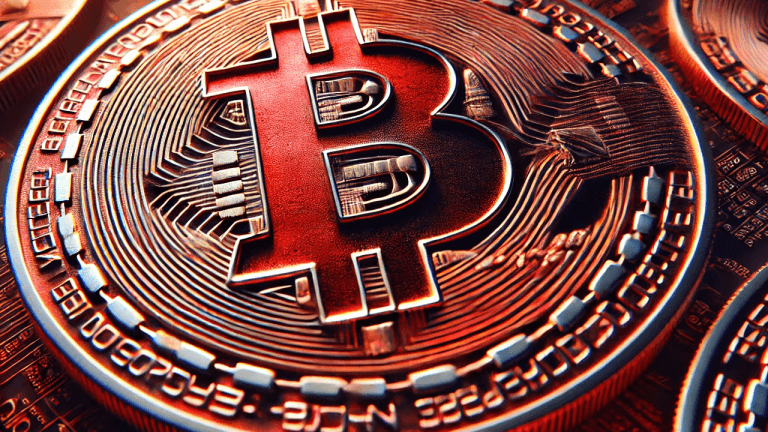Crypto industry may escape lasting damage from Silvergate liquidation

Some foresee benefits if the U.S. finally gets sensible crypto regulation post-Silvergate, and traditional banks “may become warmer to establishing [crypto] relationships.”
Banks are the lifeblood of a nation’s economic system, and any bank collapse is disturbing. Last week saw two failures. On March 8, Silvergate Capital — the cryptocurrency-focused banking company — entered into voluntary liquidation. On March 10, United States regulators shut down and seized the deposits of tech-oriented Silicon Valley Bank in what was being called the second-largest bank failure in U.S. history. Both California institutions were victims of bank deposit runs.
The fallout from the collapse of Silicon Valley Bank (SVB) could be significant, though it’s too early to tell. Stablecoins like USD Coin (USDC) and Dai (DAI) losing their dollar pegs is never a good sign, but they were recovering by Sunday, March 12. However, it’s unlikely that the Silvergate Bank debacle will cause long-term harm to the crypto sector.
The fall of the San Diego-based Federal Reserve-member bank should be a minor event compared with the earthquake unleashed by FTX’s November 2022 bankruptcy, sources told Cointelegraph. FTX’s implosion damaged scores of crypto firms, including Silvergate Bank. By comparison, the fallout from the bank’s liquidation should be more contained. It might even provide some valuable lessons about diversification — a fundamental principle of risk management that seems to be forgotten when markets soar.
There will likely be short-term consequences that will likely make life more difficult and costly for crypto firms to find banking services in the United States. And it’s not just the U.S. that is seeing some turmoil.
In Latin America, which is primarily a crypto foreign exchange (FX) market where many firms buy stablecoins like USDC and Tether (USDT) as a means of sending funds abroad, “the Silvergate fallout was problematic,” Thiago César, the CEO of fiat on-ramp provider Transfero Group, told Cointelegraph.
“Most crypto exchanges lost their U.S. dollar rails.[…] It impacted the alternative FX market in LATAM fueled by crypto.” Local Brazilian dealers in USDT and USDC suddenly couldn’t replenish their inventories, César reported. (This interview was conducted before the SVB seizure, which rattled some stablecoin firms further.)
Josh Olszewicz, head of research at Valkyrie Digital Asset Management, told Cointelegraph: “The lack of on and off-ramps as well as general banking needs of consumers and businesses interacting with the crypto industry may be hampered in the near term.” Coinbase, Paxos, Gemini, Bitstamp and Galaxy Digital, among others, were using Silvergate as a banking partner.
That said, the Silvergate collapse probably doesn’t present long-term obstacles. “Fundamentally, a bank exiting the crypto industry does not hurt any blockchain, including Bitcoin,” Olszewicz added.
Lessons learned?
Joseph Silvia, partner at law firm Dickinson Wright — and former counsel to the Federal Reserve Bank of Chicago — views Silvergate Bank’s liquidation more as a “cautionary tale” than a harbinger of tougher times for the crypto sector. The bank was insufficiently diversified and dependent on the crypto industry for its deposits. Similarly, Silicon Valley Bank was arguably too concentrated on tech-based venture capital firms. In both cases, a trickling away of customer deposits rapidly turned into a torrent.
More than 90% of Silvergate’s deposits were from crypto-related firms, and after FTX’s November implosion, nervous investors withdrew those deposits in what amounted to a classic bank run. This activity did not go unnoticed by U.S. bank regulators. The Federal Reserve and the Office of the Comptroller of the Currency issued a joint statement in February, warning banking organizations about “liquidity risks” as the result of “crypto-asset market vulnerabilities.”
Recent: Next stop Shanghai — Ethereum’s latest milestone approaches
In the wake of Silvergate’s liquidation, some traditional banks may now shut the doors entirely to crypto accounts, while others may severely limit acceptance of crypto deposits, said Silvia. This will probably increase costs for U.S. crypto firms as their banking options become more limited.
Aside from being too concentrated on a single high-risk industry sector, Silvergate may have invested in the wrong assets. As Austin Campbell, an adjunct professor at Columbia Business School and managing partner of Zero Knowledge Consulting, told Cointelegraph, “Essentially, you either want a highly diversified deposit base if you have longer-dated assets because you can’t easily survive a run and need the diversification, or if you are highly concentrated, you should have a much shorter duration asset base so that you can easily liquidate in the case of a mass withdrawal.” Campbell added:
“Silvergate was highly concentrated and had longer duration securities. You can’t do both. You need to pick one. They would have been fine being this concentrated if they didn’t extend out duration on the asset side.”
Campbell doesn’t think Silvergate’s collapse will be as consequential for the crypto sector as FTX’s collapse — nor even have much of an impact in the broader banking industry. Silvergate’s assets totaled $11.4 billion at the end of 2022, which is mid-sized by U.S. bank standards.
By comparison, JPMorgan Chase’s year-end balance-sheet assets stood at $3.66 trillion, more than 300 times larger. SVB, with $209 billion in assets, is somewhere in between. Silvergate is “the definition of a small problem” from a mainstream banking perspective, observed Campbell, who went on to say:
“For crypto, FTX was a big issue not just because of the volume but because of the staggering depth of the fraud and mismanagement. Silvergate appears to have just messed up asset-to-liability matching, which is an age-old problem in banking. It was not that the CEO was stealing billions from the customers.”
“FTX was a much more serious problem,” agreed Justin d’Anethan, institutional sales director at the Amber Group — a Singapore-based digital asset firm. D’Anethan added, “Countless entities were funded, trading, custodied, earning yields and lending to either FTX the exchange or Alameda the fund. That rippled into the entire crypto space.”
Silvergate may have an impact in the U.S., “but it still leaves crypto [firms] with many alternatives and substitutes, and, if anything, the impetus to be more decentralized,” d’Anethan continued. In the short term, “other crypto-friendly banks like BCB, Prime Trust, SEBA” offer on-ramp/off-ramp and FX conversions. “Naturally, for mainstream or institutional adoption, you do need fiat rails for fresh capital to come into crypto markets. But, at this point in time, there’s nothing that makes me think we’ll be lacking those.“
Others suggested that U.S. regulators are intent on scaring off traditional banks from doing business with cryptocurrency exchanges. Will it result in crypto firms moving out of the United States, with users going to peer-to-peer transactions as in China, as Samson Mow recently suggested?
Silvergate going down and exchanges losing their banking doesn’t impact #Bitcoin. The collapse of fiat banking for exchanges will just mean buying/trading goes P2P.
Just like in China. There’s still a robust P2P trading ecosystem with exchanges gone.
— Samson Mow (@Excellion) March 3, 2023
“I think many US-based businesses will already have or be in the process of finding overseas solutions. And this will benefit jurisdictions that are more crypto-friendly. I’m thinking of Dubai, Singapore, Hong Kong, maybe the U.K. or Switzerland,” said d’Anethan, adding:
“For retail, if based in the U.S., it will be trickier. Ironically, in a bid to protect retail investors, regulators might stop them from getting exposure to an industry that — if history is any guide — keeps on growing and gaining adoption worldwide.”
Valkyrie’s Olszewicz even saw a positive outcome if the U.S. finally got sensible crypto regulation. “Potentially, as digital asset businesses and exchanges become increasingly regulated, the larger traditional banks may become warmer to establishing relationships with those in the digital asset space. If not, then yes, more and more businesses and capital will move offshore as crypto isn’t going anywhere anytime soon.”
Recent: Ethereum layer-2 solutions may focus less on token incentives in the future
“I think the long-term impact will be banking relationships moving elsewhere, and in a positive case, becoming both more diversified and more resilient,” said Columbia Business School’s Campbell. “The U.S. regulators, however, are moving in the other direction and taking this as an example that crypto is the problem — it’s not, poor risk management was — so this may also force crypto to build stronger banking relationships both in Asia and in Europe, especially in a post-MiCA [Market in Crypto-Assets] world.”
Just growing pains?
More regulatory clarity about cryptocurrencies and blockchain technology would be helpful, Dickinson Wright’s Silvia suggested. At some point, U.S. regulators may become more explicit in their advisory statements — warning banks, for example, that if they accept crypto deposits, the total value cannot exceed 5% of overall liabilities. In the meantime, crypto deposits remain a liquidity risk, Silvia added. “They’re not as sticky as traditional deposits.”
Some U.S. crypto firms may need to find new banks, while traditional banks may be more hesitant to accept crypto-related deposits — at least for now. But the nascent crypto industry isn’t going anywhere, added Silvia, who views current turmoil as growing pains. Some weeding out of bad actors is probably necessary at this stage. That said, the crypto sector remains “an interesting value proposition,” he told Cointelegraph.








